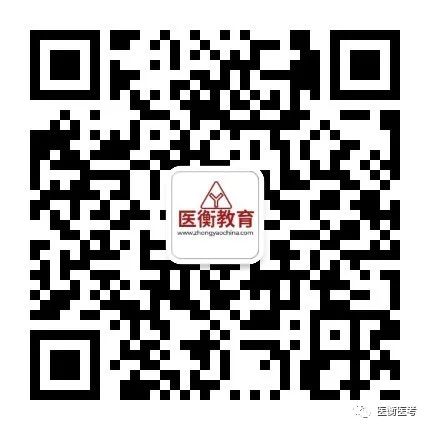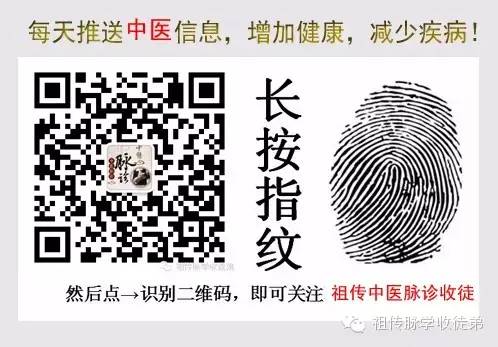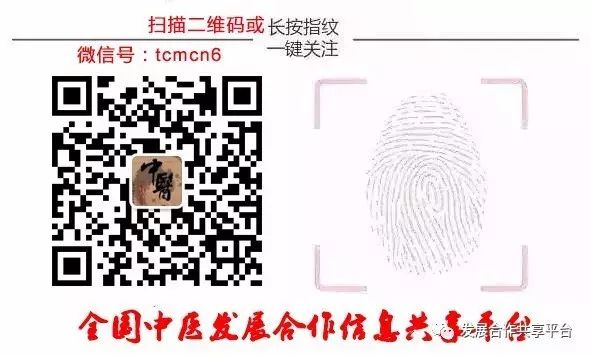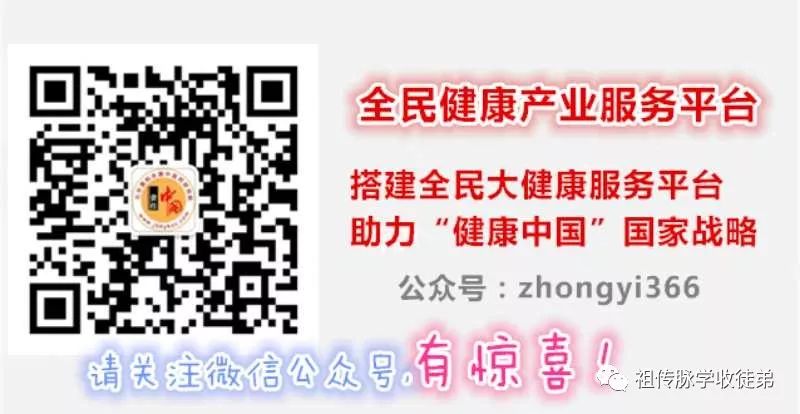China is one of the earliest countries to develop medical culture. From the dawn of civilization, as the light illuminated the Asian continent, clusters of prehistoric cultural bonfires spread across the land, connecting from point to surface, forming a raging momentum, gradually melting into the brilliance of the civilized era. “Traditional Chinese Medicine (TCM)” is a specialized term, where the character “中” (zhōng) clearly distinguishes it from “西医” (xī yī), or Western medicine. Therefore, what people understand as “TCM” refers to traditional Chinese medicine or Chinese doctors. However, upon serious and practical examination, the original meaning of “中医” (zhōng yī) does not actually refer to China!

What is the evidence? The term “中医” (zhōng yī) first appeared in the “Book of Han (汉书) – Arts and Literature” with the phrase “有病不冶,常得中医” (yǒu bìng bù yà, cháng dé zhōng yī), meaning “if there is illness and no treatment, one often receives TCM.” As early as over two thousand years ago during the Western Han Dynasty, the term “中医” (zhōng yī) existed, at a time when Western medicine had not yet formed a system and had not been introduced to China (Western medicine was introduced to China about 1,700 years later during the late Ming Dynasty). The people of the Western Han did not even know what Western medicine was, so how could they refer to Chinese medical practices as “中医” (zhōng yī) to distinguish it from Western medicine? The term “中医” (zhōng yī) began in the Western Han, and if “中” (zhōng) does not refer to China, what does it mean? The earliest understanding of the essence of things in China is based on the “I Ching (易经)” which incorporates all things in the world into the realm of Yin and Yang, having significant and direct influence on later philosophies, society, geomancy, astronomy, geography, medicine, etc. Therefore, ancient Chinese medical theory holds that the balance of Yin and Yang in the human body must be maintained to achieve health and prevent illness. If Yin and Yang are imbalanced, disease will inevitably arise. TCM doctors have a saying, “持中守一而医百病” (chí zhōng shǒu yī ér yī bǎi bìng), meaning that if the body maintains a balanced Qi without excessive Yang dryness or Yin deficiency, one will be free from all diseases. Thus, “尚中” (shàng zhōng) and “中和” (zhōng hé) are the true meanings of the “中” (zhōng) in TCM. Of course, today the term “中医” (zhōng yī) refers to Chinese medicine, but understanding the meaning of “中和” (zhōng hé) will clarify why doctors often speak of nourishing Yin, tonifying Yang, and regulating… From this point, the history of Chinese medical civilization began. The 5,000-year history of documented Chinese medicine, shaped by the characteristics of Eastern cultural development, has formed a unique theoretical framework, and with the impact of modern Western science and the introduction of Western medicine, two distinct layers have emerged, presenting a complex and diverse state in the intersection of Eastern and Western medicine. During the Xia, Shang, and Western Zhou periods, medicine and shamanism coexisted, with a wealth of medical and health content recorded in divination materials, forming the embryonic form of medicine. The Spring and Autumn and Warring States periods were a time of flourishing academic discourse in China, where medicine and shamanism separated, and medicine became more scientific, practical, and rational, dominating the healthcare sector. The specialization of clinical medicine began to take shape. During the Qin and Han dynasties, clinical medicine, particularly in the areas of febrile diseases, miscellaneous diseases, and surgery, reached unprecedented levels. This marked the first peak in the history of Chinese medicine. During the Three Kingdoms, Jin, and Northern and Southern Dynasties, Chinese society was in a prolonged state of turmoil and division, and medicine achieved success in areas such as pulse diagnosis, acupuncture, herbal formulas, trauma treatment, and health maintenance, accumulating experience for the comprehensive development of medicine. In the Sui and Tang dynasties, the country was unified again, with a strong national power and cultural prosperity, forming an unprecedented grand momentum. Chinese medicine developed comprehensively during this period. Medical practitioners achieved richer results in their respective research fields. This marked the second peak in the history of Chinese medicine development. The Song and Yuan dynasties were important periods for the development of TCM. The government’s emphasis played an increasingly important role in the development of medicine. The Northern Song government organized personnel to compile formulas and materia medica, established the Medical Book Correction Bureau, cast acupuncture bronze figures, reformed medical education, and established public welfare bureaus, medicine bureaus, and health clinics, effectively promoting the advancement of medical and health practices. The Liao, Xia, Jin, and Yuan dynasties coexisted with the two Song dynasties, marking a period of great cultural integration between the northern ethnic minorities and Han culture, a brilliant period in the history of Chinese medicine where various schools of thought flourished, injecting new vitality into the multi-source and integrated traditional Chinese medicine. In the Ming Dynasty, there was a trend of innovation in the development of medicine. Research on infectious disease causes, the creation of variolation for smallpox prevention, and studies in herbal medicine entered a new level. The scope of exchange between Chinese and foreign medicine reached many countries and regions in Asia and Africa, with the export of Chinese medicine and the influx of Western medicine benefiting both cultures through interaction. In the early to mid-Qing Dynasty, medicine became more popular and elevated, with Wang Qingren engaging in human dissection and authoring “Medical Forest Corrections,” reflecting the pioneering spirit of “revolutionary theorists” in the Chinese medical community. All of the above outlines the grand history of ancient Chinese medicine. This continuous and uninterrupted medical culture and civilization, spanning thousands of years, is rare in the history of world medicine. The vast number of classical Chinese medical texts and the multitude of renowned physicians are also uncommon in the world during the same period. Traditional Chinese medicine possesses strong vitality, developing alongside the progress of the times. After experiencing clashes and confrontations with modern medical culture, it has also absorbed useful elements from advanced foreign cultures, leading to explorations of the integration of Chinese and Western medicine. Traditional medicine is moving towards modernization. In the past century, the pattern of modern Chinese medicine, traditional medicine, and the integration of Chinese and Western medicine will objectively reflect and comment on the history of modern Chinese medicine over the past hundred years. The history of Chinese medicine is indispensable for research on ancient Chinese medicine, modern medicine, and comparative studies with various medical systems, as well as for work in medical education, research, and health management. It covers a wide range of topics and spans a vast time and space, which cannot be replaced by other disciplines. From the atypical pneumonia outbreak in 2003 to the currently prevalent highly pathogenic avian influenza, we are all waiting for the next pandemic that will test us. How should we face it? However, in the prevention and treatment of SARS and avian influenza, people have discovered that something passed down from our ancestors played a key role, which is TCM. TCM has the inherent traditional culture and philosophical foundation of the Chinese nation. It belongs to the Chinese cultural system, just like traditional Chinese painting, poetry, the “I Ching,” and feng shui. At the same time, it is also a medical science closely integrated with natural sciences. On April 7, 2003, after experts from the World Health Organization inspected the Guangdong Provincial Hospital of Traditional Chinese Medicine, they stated that SARS patients who received TCM treatment had shorter fever durations and hospital stays. Experts also suggested that if TCM could be elevated to a standard treatment level, it would be very helpful for the prevention and treatment of SARS in other parts of the world. This greatly encouraged the TCM community and injected fresh empirical blood into this millennia-old traditional medicine. Looking back at the history of TCM, it can be traced back to the pre-Qin period. This was an important stage in Chinese history, transitioning from primitive society to civilized society. In this long history of 1,800 years, our ancestors created a complete traditional cultural foundation. The oracle bones from the Xia and Shang periods and the bronze vessels from the Yin and Shang dynasties are historical markers of human civilization. It was during this period that concepts such as Yin and Yang, the Five Elements, the I Ching, and the Eight Trigrams developed under the influence of philosophical systems, leading to the development of TCM and herbal medicine. It can be said that the profound cultural accumulation of TCM is its most significant difference from Western medicine. When people began to understand how to accumulate self-rescue knowledge learned from life into a medical theory, the understanding of nature in both Western primitive medicine and Chinese primitive medicine was similar. Hippocrates, known as the “Father of Medicine” in the West, pointed out that nature consists of the “four elements” of fire, air, water, and earth, which generate the movement and changes of all things. In China, the “Huangdi Neijing (黄帝内经)” written during the Spring and Autumn and Warring States periods summarizes the laws of “Yin and Yang” governing celestial movements and the laws of the “Five Elements” manifested as metal, wood, water, fire, and earth, which interact with each other. These four elements and the Five Elements show that the conceptual distance between Eastern and Western medicine during this period was not very far. The term “中医” (zhōng yī) first appeared in the “Book of Han (汉书) – Arts and Literature – Classic Formulas,” which states: “以热益热,以寒增寒,不见于外,是所独失也。故谚云:有病不治,常得中医” (yǐ rè yì rè, yǐ hán zēng hán, bù jiàn yú wài, shì suǒ dú shī yě. gù yàn yún: yǒu bìng bù zhì, cháng dé zhōng yī). Here, the character “中” (zhōng) is pronounced in a falling tone. The term “中医” (zhōng yī) truly emerged around the time of the Opium War. Western medicine from the East India Company named Chinese medicine “中医” (zhōng yī) to distinguish it from Western medicine. At that time, the name “中医” (zhōng yī) was used to compare with Western medicine. By 1936, the Nationalist government enacted the “Regulations on Traditional Chinese Medicine,” officially legalizing the term “中医” (zhōng yī). In the past, people also referred to Chinese medicine as “汉医” (hàn yī), “traditional medicine,” and “national medicine,” all of which emerged to distinguish it from Western medicine. Over two thousand years ago, the concept of TCM in the “Book of Han” reflects the highest realm of Chinese medicine. What is the highest realm of TCM? It is to achieve “中和” (zhōng hé). Cold should be treated with heat, and heat with cold. Achieving “中和” (zhōng hé). Cold should be countered with heat, heat with cold, knots should be resolved, and exertion should be balanced with rest. Minor issues can be reversed, while severe issues must be followed; if you resist them, you will collapse and cease to exist. Whether above or below, whether to rub or bathe, whether to thin or thicken, the key is to do it just right. Taking balance as the goal and harmony as the priority is its highest realm. The crucial philosophical proposition in the “Doctrine of the Mean (中庸)” is the idea of “致中和” (zhì zhōng hé). The “Doctrine of the Mean” states: “中也者,天下之大本也;和也者,天下之达道也。致中和,天地位焉,万物育焉” (zhōng yě zhě, tiān xià zhī dà běn yě; hé yě zhě, tiān xià zhī dá dào yě. zhì zhōng hé, tiān dì wèi yān, wàn wù yù yān). This means that harmony is the ideal state of existence for all things in the world. Achieving this ideal state through various methods is the essence of “致中和” (zhì zhōng hé). When heaven and earth are in their proper places, all things grow and develop. It can be said that the physiological mechanisms explained by TCM, such as “阴阳和合” (yīn yáng hé hé) and “阴平阳秘” (yīn píng yáng mì), are the best embodiment of Confucian thought on achieving harmony. Under this ultimate goal, TCM uses the theories of Qi, Yin-Yang, and the Five Elements, which originate from classical Chinese philosophy, to specifically explain the secrets of life. Qi, in ancient China, was a simple understanding of natural phenomena. As early as the Spring and Autumn and Warring States periods, materialist philosophers believed that Qi was the most basic substance that constitutes the world. All things in the universe arise from the movement and change of Qi. This simple understanding was gradually formed into the concept of Qi in TCM: Qi is the fundamental substance that constitutes the human body; when Qi gathers, it forms an organism, and when Qi disperses, the body perishes. Zhuangzi said: “通天下一气耳” (tōng tiān xià yī qì ěr), meaning that the whole world is one Qi. With this Qi, there is movement, life, and constant change. Without this Qi, everything is finished. A famous modern TCM professor stated that a person is defined by this Qi; when this Qi is gone, the person is no longer there. If this Qi remains, the person is alive. We study the living body that possesses Qi. What is the theory of Qi? It is the belief that the world originated from Qi; above is Qi, and below is form, which is the earth. This is Qi. As stated in “春秋繁露” (Chunqiu Fanlu), Dong Zhongshu said: “元气者,始也” (yuán qì zhě, shǐ yě), meaning that it is the beginning of all things. With this original Qi, everything begins to move. Without this original Qi, nothing exists, just like the divine impetus that Newton sought to explain the first push of the earth. Everyone is looking for an explanation of the world, and TCM can be understood as this explanation. What is Yin and Yang? Our ancestors believed that all energy, modes of movement, spatial orientations, temporal sequences, properties of things, and the Qi that gathers all things can be summarized by Yin and Yang. Yin and Yang are the two dialectically opposing aspects of all things. The “Huangdi Neijing – Suwen” states: “察色按脉 先别阴阳” (chá sè àn mài, xiān bié yīn yáng). TCM emphasizes the balance of Yin and Yang to achieve harmony. In the “I Ching”, it is stated: “一阴一阳,之为道” (yī yīn yī yáng, zhī wéi dào). Yin and Yang are the beginnings of all things; with Yin and Yang, all things begin to exist. Laozi said: “一生二,二生三,三生万物,万物负阴而抱阳,冲气以为和” (yī shēng èr, èr shēng sān, sān shēng wàn wù, wàn wù fù yīn ér bào yáng, chōng qì yǐ wéi hé). This means that with Yin and Yang, there is Qi, and thus all things come into being. This is our understanding of the concept of Yin and Yang. Western medicine and TCM also have similar aspects. TCM emphasizes the balance of Yin and Yang, while Western medicine speaks of acid-base balance. Electrolyte imbalance is a challenging condition in modern hospitals. If a person is older and experiences electrolyte imbalance, antibiotics may not work effectively. Pneumonia can be fatal in such cases. Acid-base imbalance can cause significant headaches for many doctors, making it difficult to adjust. For example, if the acidity is too high, adjustments may not work; if the alkalinity is too high, adjustments may also fail. So how does Western medicine understand acid-base balance? It believes that the human body seeks to maintain a balance of potassium and chloride ions, each at 156 milligrams per unit, which is called acid-base balance, or pH balance. This balance is constantly changing, and there are three buffering systems: the amino acid buffer, phosphate buffer, and bicarbonate buffer, which correct the pH value. For instance, if acidity is high, it can be adjusted; if alkalinity is high, it can also be adjusted; it acts as a regulator. When the imbalance is too severe, these three regulators become ineffective. This leads to electrolyte imbalance. Western medicine also seeks to achieve balance; if adjustments fail, it results in conditions like acidosis or alkalosis. In TCM terms, this is akin to Yin and Yang imbalance, which occurs when potassium and sodium ions are unbalanced. High potassium patients are at great risk, and low potassium patients are also at risk; both can lead to sudden death. In this regard, one could argue that Western medicine is discussing Yin and Yang, but it is not; it is discussing the stability of the internal environment. This stability of the internal environment aligns perfectly with the concept of “中” (zhōng) in TCM. If we truly recognize that TCM emphasizes a stable internal environment, Western medicine can accept this. Approaching the integration of TCM and Western medicine from this perspective will yield better results. In February 2006, the Chinese Ministry of Culture announced the first batch of national applications for world intangible cultural heritage. TCM, as an original discipline developed by the Chinese nation in the long struggle against disease, was included. According to regulations, applying for world intangible cultural heritage must meet three basic conditions: it must have historical, cultural, and scientific value, be in a state of danger, and have a complete protection plan. Whether it is in a state of imminent extinction is the most critical point… TCM is a comprehensive methodology that considers human physiology, psychology, behavior, and external physical movements based on an absolute worldview and a nihilistic cyclical view of life, correcting and unifying the non-unified phenomena of human physiology, psychology, and behavior. Its worldview is profound and essential; its view of life transcends life and death; its methodology is just, fair, and in accordance with the way of heaven.

|
I Copyright Statement: We respect knowledge and labor; please retain copyright information when reprinting. The copyright of the content published on this platform belongs to the relevant rights holders. If there are any improper uses, please feel free to contact us for negotiation. I Submission and Cooperation Email: [email protected] 【Cautionary Statement】 All works not marked as original are reprinted, translated, or excerpted from other media. The purpose of reprinting, translating, or excerpting is to convey more information and does not represent the views of this site or its sub-sites, nor does it assume responsibility for their authenticity. Other media, public accounts, or individuals must retain the source of the article when reprinting or using it and bear legal responsibility. This subscription account maintains neutrality regarding the statements and judgments made in the text and does not provide any express or implied guarantees regarding the accuracy, reliability, or completeness of the content. 【Special Reminder】: If you do not wish for your work to appear on this site, please contact us to request its removal. |
Currently, over 100,000 people have followed and joined us.

















See more latest information on TCM, Chinese medicine, health, and wellness news
Please long press the QR code below to follow us
Recommended excellent TCM public WeChat professional platform
 Public account ID:zyjyccbk Long press the QR code above to follow, “the treasure trove of experiences from renowned TCM doctors” is welcome!
Public account ID:zyjyccbk Long press the QR code above to follow, “the treasure trove of experiences from renowned TCM doctors” is welcome!
Long press the QR code above to follow, “the national TCM development cooperation information sharing platform“

TCM, clinical, oral practitioner examination, TCM specialty, licensed pharmacist, health management specialist, health qualification examination






